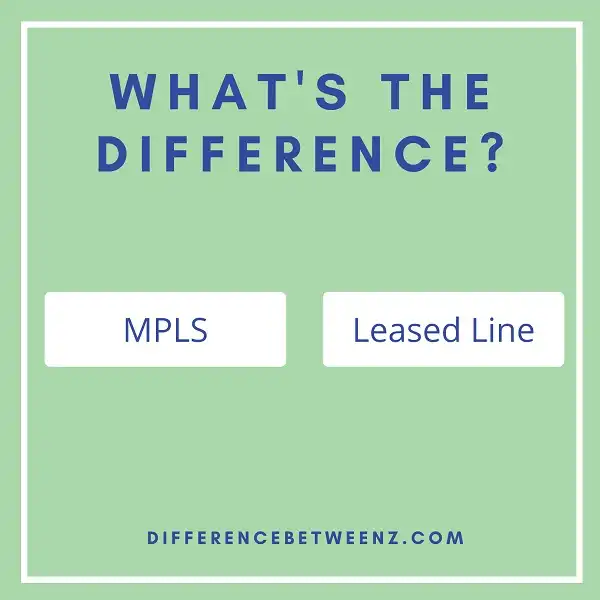MPLS and leased line are two different types of networking technologies. MPLS is a private network that is built on top of the public internet, while leased lines are dedicated connections between two points. In this article, we will explore the differences between MPLS and leased lines, and discuss the benefits and drawbacks of each technology. We will also look at some real-world use cases to help you decide which technology is right for your business.
What is MPLS?
MPLS (Multiprotocol Label Switching) is a type of data-carrying technique for high-performance telecommunications networks that directs data from one node to the next based on short path labels rather than long network addresses, avoiding complex lookups in a routing table. MPLS supports a range of access technologies, including T1/E1, ATM, Frame Relay, and Ethernet. MPLS is scalable and can be used to support both small and large networks. MPLS is also efficient, as it can provide quality of service (QoS) guarantees for real-time applications such as voice and video. MPLS has been deployed by service providers around the world and is now the de facto standard for next-generation networks.
What is a Leased Line?
Leased lines are data lines leased from a telecommunications provider. They are commonly used by business and organizations to connect to the internet and form Private Branches Exchange (PBX) systems. Leased lines can be used for voice or data and provide a symmetrical connection, meaning that data can be uploaded and downloaded at the same speeds.
Leased lines are typically more expensive than broadband connections, but they offer a number of advantages, including higher speeds, greater reliability, and dedicated customer support. As a result, leased lines are often the best option for businesses that need a high-performance internet connection.
Difference between MPLS and Leased Line
MPLS (Multiprotocol Label Switching) and Leased Lines are both types of private network connectivity that can be used to connect two locations. MPLS is a newer technology that uses a different approach to routing data packets, while leased lines are a more traditional method of establishing a private connection. MPLS is generally considered to be more efficient and provide better performance than leased lines, but leased lines may be a better option in some situations. When choosing between MPLS and leased lines, it is important to consider the specific needs of the business and the possible trade-offs.
Conclusion
In the end, it is important to understand the difference between MPLS and leased lines so you can make an informed decision about which one will work best for your business. While each has its own benefits, MPLS may be a better fit if you are looking for reliability and security, while leased lines may be a better option if you need more bandwidth or want greater control over your network traffic.


